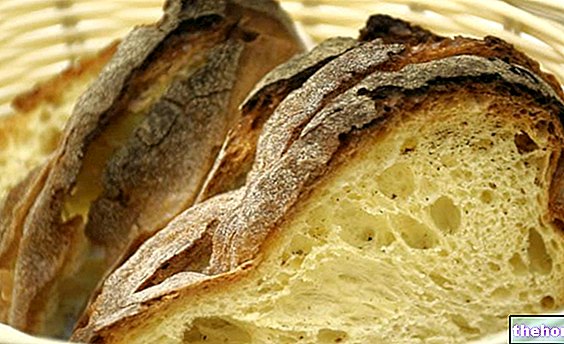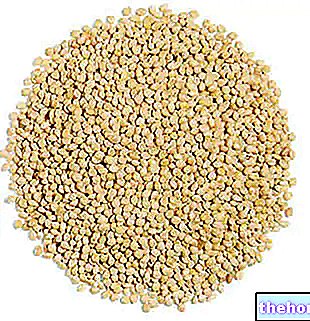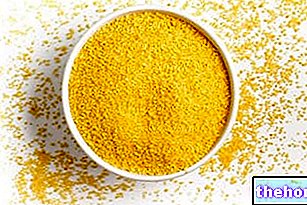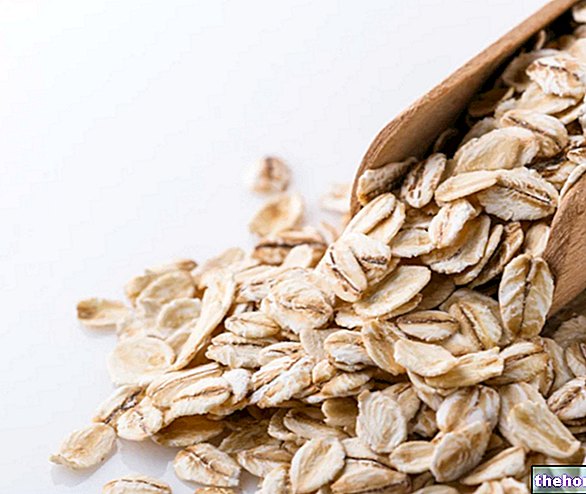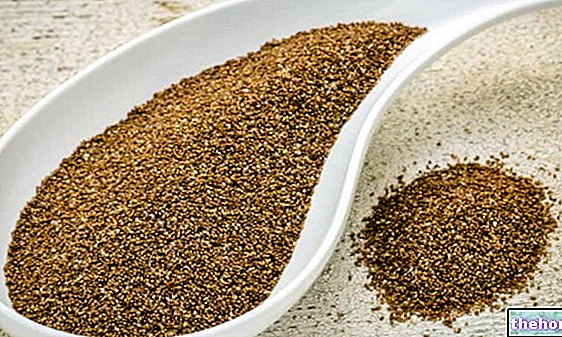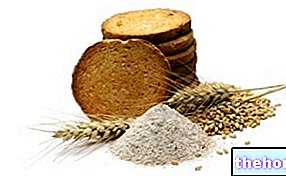Amaranth
Amaranth is a food of vegetable origin which belongs to the group of cereals *.
It has Central American origins, where it has been cultivated since ancient times; with the Spanish colonization of these places, the production of amaranth has declined, so much so that today it is a fairly obsolete product (especially in the rest of the globe).

* Not being part of the family Graminaceae, but of that of Amaranthaceae, amaranth should be better defined as a PSEUDO cereal.
Amaranth DOES NOT CONTAIN GLUTEN and for this reason it fits perfectly into the "gluten-free" diet for the treatment of celiac disease; in addition to this characteristic, amaranth boasts nutritional properties worthy of greater attention.
Amaranth can be consumed whole or in the form of flour (the leaves are used in the formulation of decoctions or as a leafy vegetable).
Amaranth flour
Generally speaking, being an "alternative" or "naturist" type product, amaranth flour is obtained from plant seeds obtained by organic cultivation.
The "milling" process is comparable to that adopted for conventional cereal flours. There is no detailed information regarding possible sifting processes but, in various texts, the nutritional values of the flour overlap with those of the whole seeds; this "should" imply that it is a 100% wholemeal product.However, it is necessary to remain with the "benefit of the doubt", since it should not be possible to produce a flour with a moderate conservative potential WITHOUT the seeds being deprived of the germ (containing easily oxidizable lipids) and WITHOUT the addition of additives!
As it does not contain gluten, amaranth flour is not suitable for the production of leavened foods. At most, it can be mixed with that of wheat (or other gluten-containing cereals) in the ratio: wheat 50-80% and amaranth 50-20%.
Being strongly aromatic, amaranth flour is instead useful in the formulation of biscuits, Ethiopian bread (injera, similar to a crepe) and Indian bread (chapati - similar to a piadina).
The table below shows the nutritional values of the amaranth flour produced by a "company that complies with the BIO specification.
As can be seen from the reported values, amaranth is a food that provides more or less the same energy as whole grains. For its part, it contains excellent doses of fiber, a greater quantity of lipids (up to 7 times higher than " whole wheat equivalent), surprising portions of calcium (5 times as much) and iron (twice as much). Details on the breakdown of fatty acids and the overall vitamin profile are not available.
Gluten Free Amaranth Gnocchi with Butter and Sage
Problems with playing the video? Reload the video from youtube.
- Go to the Video Page
- Go to the Video Recipes Section
- Watch the video on youtube
Other Cereals and Derivatives Amaranth Wheat starch Corn starch Rice starch Modified starch Oat starch Bulgur Whole grains Corn Flakes Crackers Oat bran Bran Cus cus Amaranth flour Oat flour Buratto flour Spelled flour Buckwheat flour Corn flour Corn flour Millet Barley flour Quinoa flour Small spelled flour (Enkir) Rice flour Rye flour Sorghum flour Flour and semolina Whole wheat flour Manitoba flour Pizza flour Spelled Rusks Focaccia Nuts Wheat or wheat Wheat germ Burnt wheat Buckwheat Breadsticks Oat milk Rice milk Corn Maizena Malt Millet Muesli Barley Stale bread Unleavened bread and Pita Bread Carasau bread Egg pasta Rice pasta Wholemeal pasta Piadina Small spelled Pizza Pop corn Baked goods Quinoa Rice Basmati rice Converted rice White rice Rice Wholemeal Parboiled Rice Puffed Rice Venus Rice Rye and Horned Rye Semolina Semolina Sorghum Spaghetti Spelled Teff Tigelle Triticale OTHER ARTICLES CEREALS AND DERIVATIVES Categories Food Alcoholics Meat Cereals and derivatives Sweeteners Sweets Offal Fruit Dried fruit Milk and derivatives Legumes Oils and fats Fish and fishery products Salami Spices Vegetables Health recipes Appetizers Bread, Pizza and Brioche First courses Second courses Vegetables and Salads Sweets and Desserts Ice creams and sorbets Syrups, liqueurs and grappas Basic Preparations ---- In the Kitchen with Leftovers Carnival Recipes Christmas Recipes Dietary Recipes Light Recipes Woman's Day, Mother's Day, Dad's Day Functional Recipes International Recipes Easter Recipes Recipes for Celiacs Recipes for Diabetics Holiday Recipes Valentine's Day Recipes Vegetarian Recipes Protein Recipes Regional Recipes Vegan Recipes

